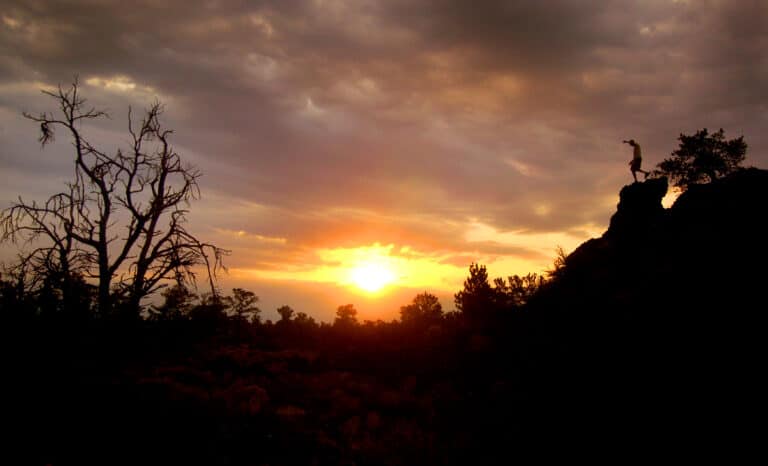For Lava Lovers
Caves, Cliffs and Critters at Craters of the Moon
Last Visited August 3, 2007

The landscape is sere, windblown, already in early May. Bare tree trunks, limbs broken, lay strewn like tumbleweeds. What trees live here are also wizened and twisted, limbs shaped by the wind into witchy fingers, Lugosi limbs, Lorre wrinkles, lithe, bony spaghetti. But thrusting from rock, sprouting from soil black with ancient ash, scampering or erupting from place to place, is life. . .